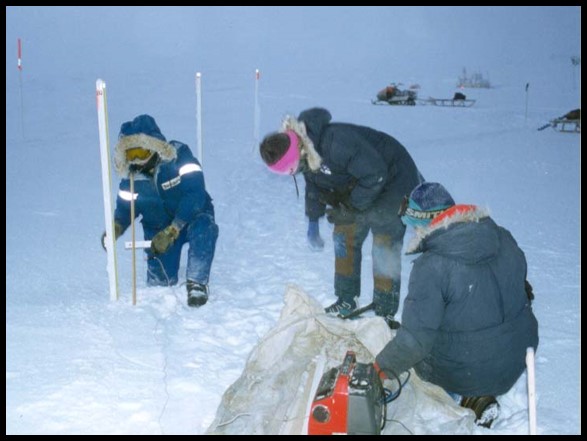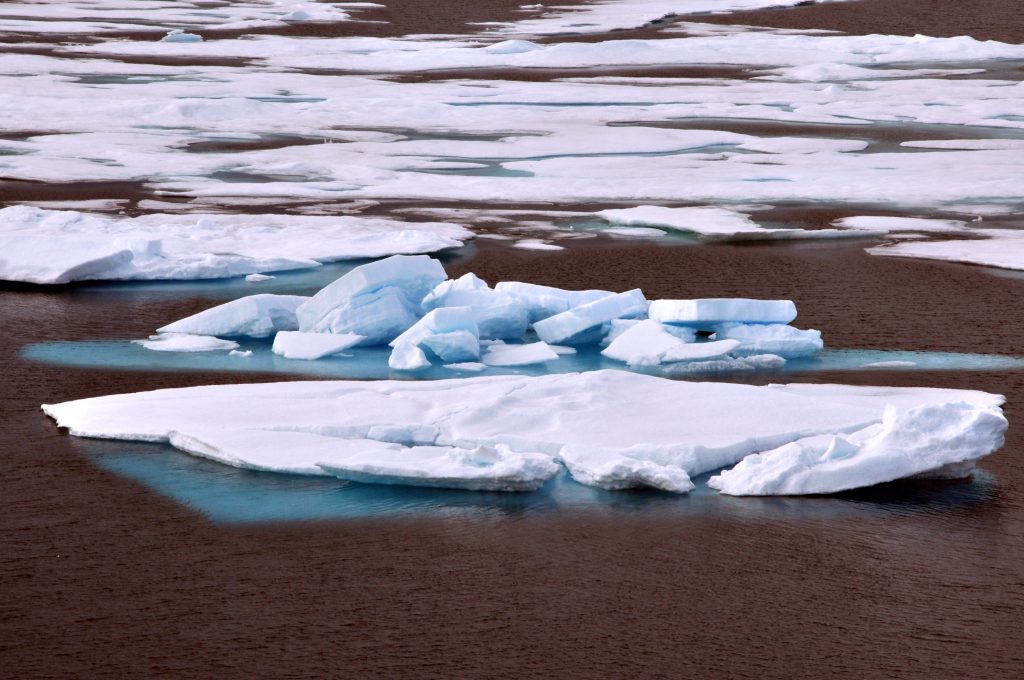Ice Mass Balance
The Arctic sea ice cover plays a major role in governing the exchange of energy between the ocean and atmosphere in the polar regions. Changes in the thickness and extent of the Arctic sea ice cover may be harbingers of climate change. Results of global climate change models indicate that there is still much to be learned about the details of the complex atmosphere-ice-ocean interaction. Key to improving this understanding is the collection of field measurements pertinent to the development of physically based parameterizations of sea ice thermodynamic processes. A basic element in studies focused on thermodynamics is the mass balance of the ice cover. The ice mass balance is the great thermodynamic integrator. If there is net warming over time, then there will be thinning of the ice. Conversely, net cooling leads to thicker ice. Coupled with ice temperature measurements, mass balance measurements provide valuable information on the heat exchange among the air, ice and ocean.
Making direct measurements of the mass balance is simple. An array of stakes and thickness gauges is used to measure ablation and accumulation of ice and snow at the top and bottom of the ice cover (see right). In spite of the importance of mass balance measurements and the relatively simple equipment involved in making them, there are few observational results. This is due, in large part, to the expense involved in operating a long-term field camp to serve as the base for these studies.
The mass balance of sea ice can also be inferred autonomously using temperature profile measurements and acoustic position sensors. This project will supplement the exisiting mass balance database with observations from autonomous buoys. These mass balance buoys use thermistors to measure the ice temperature and acoustic sensor to determine the postion of the ice surface and bottom. Results from these autonomous mass balance buoys are presented in this website.


Ice Drift
For extensive information on the motion and drift of sea ice, go to the International Arctic Buoy Program. The Polar Science Center Applied Physics Laboratory at the University has numerous available resources.
